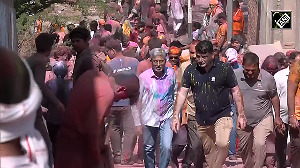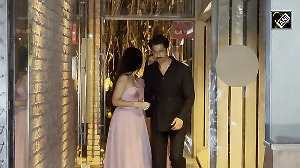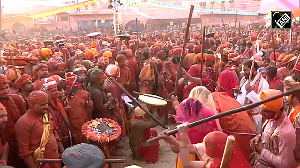A partial solar eclipse will be seen in India on Friday while the north-eastern parts of the country will see quite a large fraction of the disc of the Sun, eclipsed by the Moon.
"The partial eclipse will be seen in the north-eastern region, starting from about 4 pm," said Rathnasree, director of Nehru Planetarium.
The biggest and the last phase of the eclipse will be visible from most parts of the country, except Nagaland and Mizoram, where the eclipse ends after sunset, she said.
The maximum obscuration of the sun will occur at Sibsagar in Assam.
National Aeronautics and Space Administration (NASA) has made arrangements to telecast live images of the rare celestial event.
NASA, in partnership with the Exploratorium Science Centre, San Francisco, and the University of California at Berkeley, will transmit coverage of the total eclipse in a live streaming webcast.
NASA TV will cover the eclipse, to be visible in parts of Canada, northern Greenland, the Arctic, central Russia, Mongolia and China, from 1530 IST to 1745 IST.
The coverage will originate from China, considered one of the best observation locations because of the weather conditions there.
Viewers all across the globe can see the eclipse on NASA TV and by logging on to www.nasa.gov.
NASA coverage will feature views from telescopes and a live educational show during the eclipse.
The southern parts of India will see between 20-40 per cent of the diameter of the sun, while the northern parts of the country will see between 40-70 per cent of the diameter of the sun, at maximum of the eclipse.
The eastern parts of the country will have the advantage that being closest to sunset, some of the eclipse would still remain so that, a possibility of safely imaging the eclipse against their local geography is feasible, the director said.
Experts have repeatedly warned that viewing the eclipse with naked eyes would be very dangerous. What is still more dangerous is viewing the Sun through a telescope or a pair of binoculars without a proper filter as it could destroy the eyesight.
The safest way of viewing a partial solar eclipse is through the method of projection. If you do not have access to a telescope or a pair of binoculars, an easy method will be to use a kitchen 'chalni' that has very small perforations.






 © 2025
© 2025